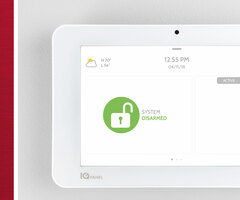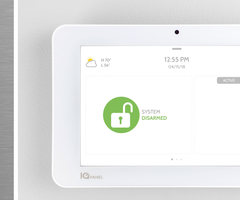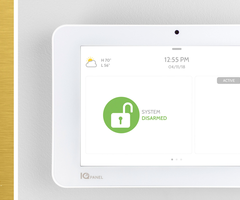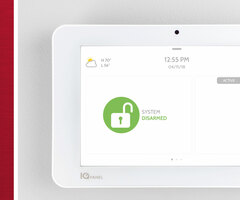What is Z-Wave Plus?
Z-Wave Plus refers to a wireless communications protocol that is most commonly used with smart home devices. It represents the fifth generation of Z-Wave devices, and it is sometimes called the 500 Series. Z-Wave Plus offers an impressive RF signal range and great reliability overall.

The primary use of Z-Wave Plus is to operate smart home devices. These devices can be controlled directly from an alarm system or through an interactive service platform like Total Connect 2.0 or Alarm.com. Both Total Connect 2.0 and Alarm.com offer free mobile apps for Android and iOS devices that allow Z-Wave devices to be operated remotely from virtually anywhere. Z-Wave devices can also be used with rules and scenes to operate on a set schedule or with predetermined system events. This can help make the user's life more convenient and save them money on their energy bills. Some common types of Z-Wave devices include lights, locks and thermostats.
Z-Wave works by creating a mesh network of multiple devices. Each device sends and receives its own wireless RF communication signals. In order for the device to work, these signals must ultimately reach a Z-Wave controller. In order to strengthen this communication network, Z-Wave devices can send their signals to other Z-Wave devices. A Z-Wave device that receives a signal from another Z-Wave device will then repeat the signal. This is referred to as a "hop". A Z-Wave signal can perform up to four hops on its way to its ultimate destination. The Z-Wave controller is what allows the Z-Wave device to receive remote commands from an interactive service. The amount of Z-Wave devices supported by a single controller varies between different Z-Wave hubs. Some hubs can support up to 232 individual Z-Wave devices, which will allow for a very strong mesh network.
Z-Wave Plus is the fifth generation of Z-Wave, and it operates in a very similar manner to older, "classic" Z-Wave devices. A Z-Wave Plus device can even have its signals hop across classic Z-Wave devices so that its commands from the Z-Wave controller can be received. But there are a couple of things to keep in mind when mixing Z-Wave Plus and classic Z-Wave devices. When a Z-Wave Plus signal is picked up and repeated by a classic Z-Wave device, the repeated signal will only be sent as a regular Z-Wave signal. If this repeated signal is then picked up by a Z-Wave Plus device, it will be repeated as a Z-Wave Plus signal. However, the Z-Wave controller that is being used must also be Z-Wave Plus in order for any of the signals to be rated Z-Wave Plus. If the controller is only a classic Z-Wave controller, then all Z-Wave signals will be classic Z-Wave, even if Z-Wave Plus devices are being used. That is why it is important to make sure that the Z-Wave controller is Z-Wave Plus if the user intends on using Z-Wave Plus devices.
Many users wonder what exactly is the difference between Z-Wave Plus and classic Z-Wave. Although the communication protocols are extremely similar, there are a few advantages that Z-Wave Plus offers over classic Z-Wave. A classic Z-Wave device can only communicate about 30 to 40 feet between hops, while Z-Wave Plus devices can communicate roughly 50 to 60 feet. Z-Wave Plus devices also have a 50% better battery life than classic Z-Wave devices, and Z-Wave Plus devices have a standard method for over the air (OTA) firmware updates.
If a user is looking for an alarm system that serves as a Z-Wave Plus controller, we recommend checking out the Qolsys IQ Panel 2 Plus. This is one of the most advanced alarm systems on the market today, and it will make a very capable central hub for Z-Wave Plus devices.
Did you find this answer useful?
We offer alarm monitoring as low as $10 / month
Click Here to Learn MoreRelated Products






Related Categories
- Answered
